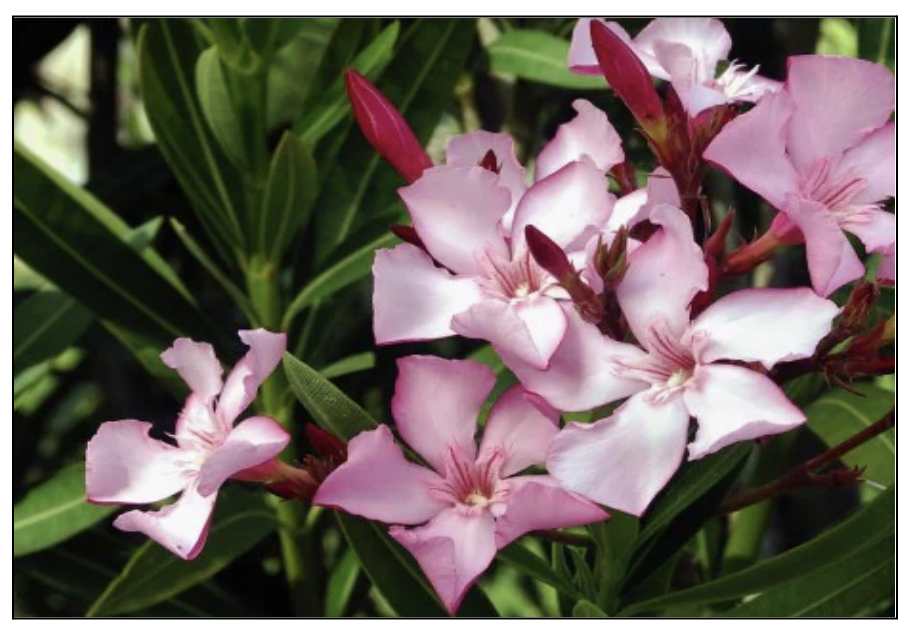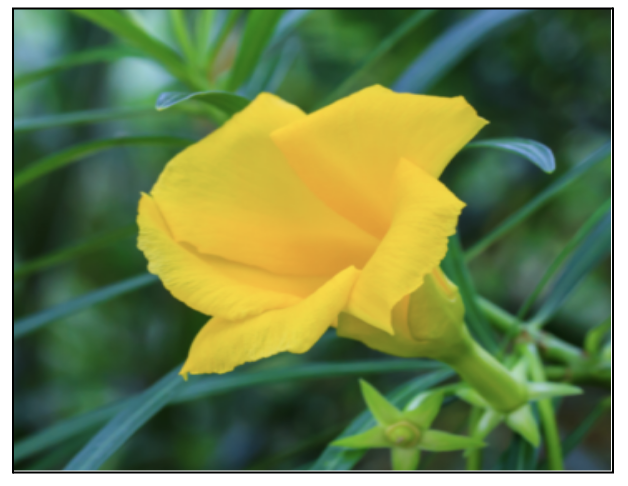News Excerpt:
Kerala has banned the oleander flowers in temple offerings.
More About the News: Two temple boards under the control of the Kerala government, jointly overseeing approximately 2,500 temples in the state, have prohibited the use of oleander flowers (commonly known as arali) in temple offerings. This decision follows the tragic death of a 24-year-old woman who accidentally consumed oleander leaves.

About Oleander:
- Oleander: Oleander, scientifically known as Nerium oleander(Type: Broadleaf evergreen, Family: Apocynaceae, Native Range: Europe, Asia), is a widely cultivated plant found in tropical, subtropical, and temperate regions globally. Renowned for its resilience to drought, this shrub is commonly used for landscaping and ornamental purposes.
- In Kerala, it goes by the names arali and kanaveeram, often serving as natural green fencing along highways and beaches. Various oleander varieties boast different colored flowers.
- The fragrant blossoms and evergreen shrubs, reaching 18-20 feet, dominate Indian landscapes from early summer to mid-autumn, adorned with clusters of single or double flowers.
- Historical Significance and Medicinal Uses: Referred to as the "desert rose" in ancient texts, oleander holds a significant place in history for its medicinal properties.
- It has been trusted as a remedy for various ailments, including its purported roles as a hangover cure, in cancer treatments, and as an antiviral agent. Both Romans and Arabs valued its healing potential across a spectrum of health issues.
- Regarding its application in traditional medicine, the Ayurvedic Pharmacopoeia of India (API) acknowledges oleander. API suggests that an oil derived from the root bark can treat skin ailments.
- Classical Ayurvedic texts frequently mention oleander, with Charak Samhita prescribing leaves of the white-flowered variety for external application in severe skin conditions, including leprosy.
- According to the US National Institutes of Health, oleander has been traditionally used against conditions such as asthma, epilepsy, painful menstrual periods, malaria, skin problems, warts, ringworm, and indigestion.
- Toxicity: However, despite its medicinal benefits, oleander carries a deadly edge. Despite its inclusion in Ayurvedic formulations, oleander's toxicity has been widely recognized.
- The plant has historically been used both therapeutically and as a means of suicide. Its toxic nature stems from cardiac glycosides such as oleandrin, folinerin, and digitoxigenin, present throughout the plant.
- Cardiac Glycosides: Cardiac glycosides are steroid compounds with pharmacological effects on cardiac muscle, primarily enhancing heart contractions. However, their narrow therapeutic range often leads to overdose and toxicity.
- Symptoms: Symptoms of oleander poisoning include nausea, diarrhea, vomiting, skin rashes, confusion, dizziness, irregular heartbeat, bradycardia, and, in severe cases, fatality. While symptoms typically last 1 to 3 days and may necessitate hospitalization, death is uncommon.
Similar Flower: Yellow Oleander

About Yellow Oleander:
- Thevetia peruviana(Or Cascabela thevetia), commonly known as Yellow Oleander(Known as Kaner in North India) belongs to the family Apocynaceae and is native to Tropical America. This striking plant typically grows as a large shrub or a small tree, reaching heights of 10 to 20 feet.
- Its leaves resemble those of the oleander, arranged mostly in whorls of three, and are long and narrow, measuring up to 10 inches in length, with pointed tips and a dark green coloration.
- The plant is adorned with beautiful, long, funnel-shaped double yellow flowers, which grace the bush or small tree almost year-round. This makes it an excellent choice for coastal areas where salt conditions limit the variety of flowering plants available.
- In India, the bright and fragrant yellow flowers of Thevetia peruviana hold significance in religious practices.


